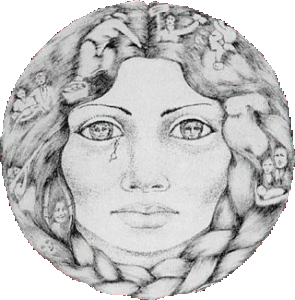What forms of oppression cause the Chicana feminist movement? The general aspects of oppression stem from discrimination against gender, race, religion, and class. The sources of this oppression originate both from a selected group of caucasian population, men within the Chicano culture, and even the women themselves. I’m going to discuss the different aspects of oppression that Chicana women face within internal and external society.
As a Mexican-American, the common Chicana woman struggles to identify and satisfy the norms of both cultures. Skin color and language are a part of this hardship. Michelle D. Young of Reconsidering Feminist Research in Educational Leadership states, “Chicana feminist scholars have remarked on the discrimination that exists because of skin color, both outside of and within the Mexican and Mexican American culture […] Often it is difficult to separate culture from ethnicity/race, but skin color is a physical characteristic that is quickly noted.” What this statement undermines is that in the caucasian American culture, Chicana women face discrimination and exclusion based on their skin color which affects their social life outside their Mexican heritage, their job opportunities, and their establishment of identity as an American.
Within their Chicano/Chicana culture, it is praised to have light skin as it is an aspect that allows one to function in a caucasian society without having to face discrimination that comes with race and class such as education levels and language barriers. A speaker in Young’s book shares, “no one ever quite told me this (that light was right), but I knew that being light was something valued in my family”. In this sense, light skin is seen as a beneficial utility that allows Chicanas/Chicanos to function in caucasian dominated societies by hiding their true nationality. This is the form of oppression caused by skin color: pre judgement based on nationality. In other words, this is a form of racism that keeps Chicana women from achieving their highest goals such as careers or social positions. This causes Chicano/Chicana cultures to encourage the oppression of their nationality and ethnic pride. Chicana feminists recognize this and make a point of their pride.
This form of oppression is especially difficult for Chicana women working within caucasian and/or wealthy households as housekeepers and/or babysitters. They are treated as different from the rest in the household in which they work; as if ghosts. This brings a gothic undertone to the lives of these women as individuals who can be outsiders to both forms of their cultures which leads to self hate, loneliness, depression, and lack of identity.
These issues act as the hardships that make Chicana/Chicano literature such a creative and expressive outlet from which the author can create eerie and abnormal symbolism in order to convey the oppression that he /she and the general Chicano/Chicana population experiences. This is where the Chicana gothic genre comes in through literature as a tool of power and justice within the Chicana feminism movement. In a class reading, “What Is American Gothic?” by Allan Lloyd Smith, the author sheds light on what the gothic aspect of Chicana literature achieves for the point that wishes to be expressed. Smith claims, “Hallmarks of the Gothic include a pushing toward extremes and excess, and that, of course, implies an investigation of limits. In exploring extremes, whether of cruelty, rapacity and fear, or passion and sexual degration, the Gothic tends to reinforce […]“. As Smith states, the Gothic approach to Chicana literature, which is used as a tool within the Chicana movement, explores the darkness of the oppression that produces the extremes that he speaks of. The Gothic genre, pushing limits by nature, demands the emotions and hardship of the story being told as it brings the material out of the comfort zone of both the writer and the reader. By this, the Chicana gothic genre works to express the issues faced by these Mexican-American women.
Sources:
1. Young, Michelle D., and Linda Skrla. Reconsidering Feminist Research in Educational Leadership. Albany: State U of New York, 2003. Print.
2.Smith, Allan Lloyd. American Gothic Fiction: An Introduction. New York: Continuum, 2004. Print.


